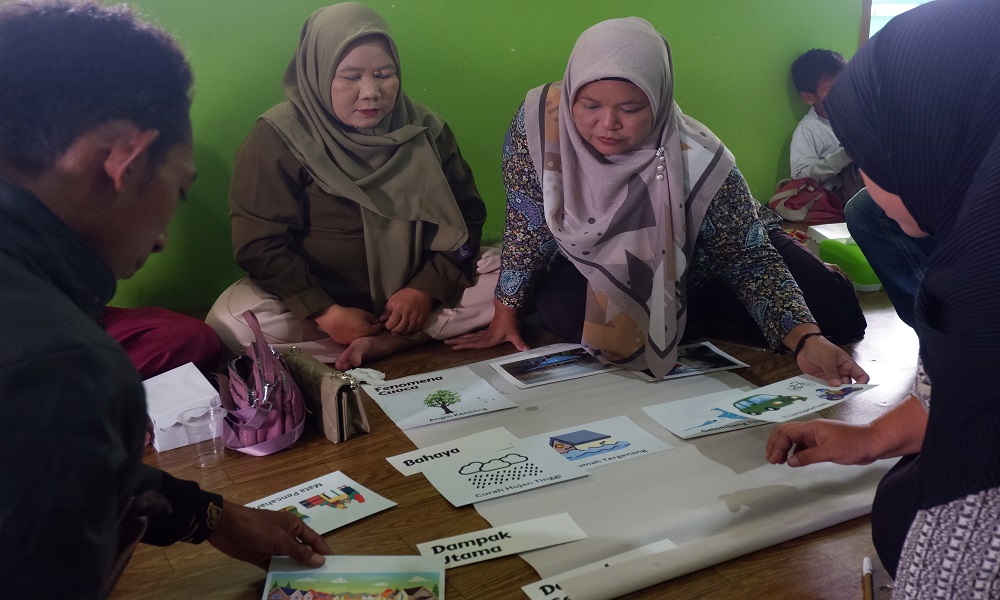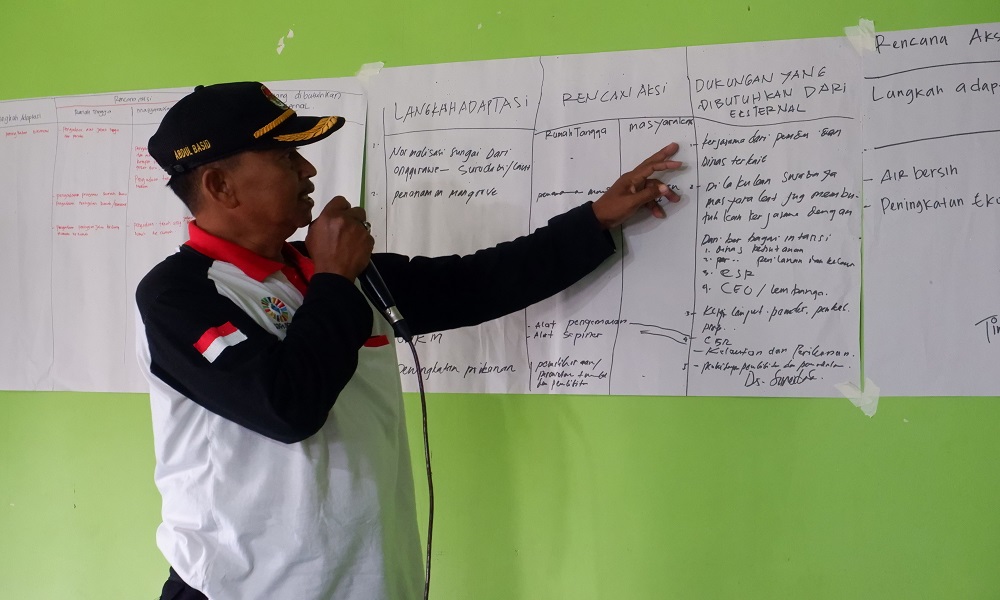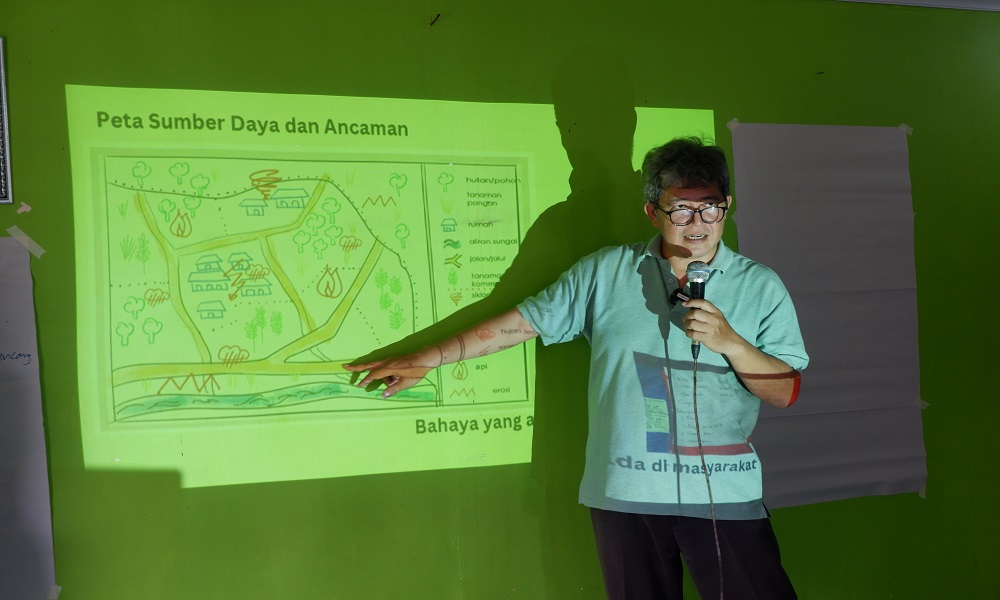
Sayung District, Demak Regency – Coastal communities in several villages in Sayung District continue to face increasing ecological disaster threats. A hazard impact assessment conducted in the areas of Sriwulan, Surodadi, and Timbulsloko revealed that tidal flooding, coastal erosion, and strong winds are the primary factors threatening residents' livelihoods and well-being.
A study facilitated by Heri Sasmito and Evi Novita found that the impacts of tidal flooding and erosion extend across multiple sectors, including natural resources, infrastructure, economy, society, and human resources. Some key findings include:
- Natural Resources: Rice fields, fishponds, and mangrove ecosystems have suffered significant damage due to tidal flooding and erosion, reducing agricultural and fisheries productivity.
- Physical Infrastructure: Roads, bridges, and residential areas have been severely damaged, worsening accessibility and mobility for the community.
- Economy: The aquaculture sector and small businesses have been affected by disrupted production due to flooding and seawater intrusion.
- Social Services: Community facilities such as Islamic study centers (TPQ), integrated health posts (Posyandu), and other social activities have been hindered due to limited facilities and restricted access.
- Human Resources: Fishermen and fishpond farmers face significant challenges in maintaining their livelihoods.

In response to these conditions, the community, with support from the government and various organizations, has developed adaptation and mitigation efforts. One innovative measure being implemented is the construction of floating and amphibious houses, developed through a collaboration between SHEEP Indonesia Foundation (YSI), Soegijapranata Catholic University, and the Demak Regency Housing and Settlement Agency (Dinperkim). Other ongoing and completed efforts include:
- Infrastructure Improvement: Elevating roads, constructing bridges, and developing adaptive housing, such as floating and amphibious houses.
- Economic Strengthening: Developing fisheries-based businesses and small enterprises, such as the production of presto milkfish and other processed seafood.
- Disaster Mitigation: Planting mangroves to reduce coastal erosion and enhancing community capacity in disaster preparedness.
- External Support: Further involvement from the government, NGOs, and the private sector in the form of funding, regulations, and the provision of materials and adaptive technology.

Despite these efforts, the community still faces significant challenges, such as limited funding, high construction material costs, and minimal external involvement in supporting long-term mitigation efforts. River normalization and strengthening clean water supply programs have been proposed as solutions to reduce coastal erosion and improve the quality of life for coastal residents.
According to Heri Sasmito, "Synergy between the community, government, and supporting organizations is the key to creating sustainable solutions for a more resilient coastal region." With collective commitment, it is hoped that the coastal areas of Sayung will continue to adapt and thrive amid the growing threats of climate change.

